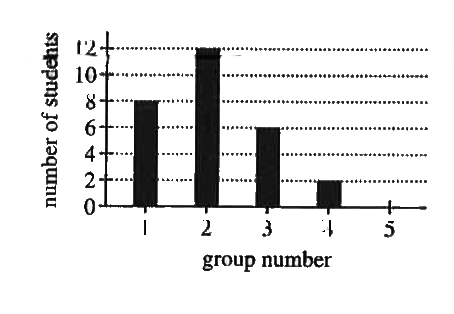In a class of 125 students 70 passed in Mathematics, 55 in statistics, and 30 in both. Then find the probability that a student selected at random from the class has passed in only one subject.
To solve the problem step by step, we will use the principle of inclusion-exclusion to find the probability that a student selected at random from the class has passed in only one subject (either Mathematics or Statistics, but not both).
Step 1: Define the Events
Let:
- M = event that a student passed in Mathematics
- S = event that a student passed in Statistics
Step 2: Given Information
From the problem statement, we have:
- Total number of students, n=125
- Number of students who passed in Mathematics, |M|=70
- Number of students who passed in Statistics, |S|=55
- Number of students who passed in both subjects, |M∩S|=30
Step 3: Calculate Students Passing Only One Subject
To find the number of students who passed only in Mathematics, we subtract those who passed in both subjects from those who passed in Mathematics:
|M only|=|M|−|M∩S|=70−30=40
To find the number of students who passed only in Statistics, we do the same:
|S only|=|S|−|M∩S|=55−30=25
Step 4: Total Students Passing Only One Subject
Now, we can find the total number of students who passed in only one subject:
|M only|+|S only|=40+25=65
Step 5: Calculate the Probability
The probability that a student selected at random has passed in only one subject is given by the ratio of the number of students who passed in only one subject to the total number of students:
P(only one subject)=|M only|+|S only|n=65125
Step 6: Simplify the Probability
Now we simplify 65125:
P(only one subject)=65÷5125÷5=1325
Final Answer
Thus, the probability that a student selected at random from the class has passed in only one subject is:
1325
---
Let:
- M = event that a student passed in Mathematics
- S = event that a student passed in Statistics
From the problem statement, we have:
- Total number of students, n=125
- Number of students who passed in Mathematics, |M|=70
- Number of students who passed in Statistics, |S|=55
- Number of students who passed in both subjects, |M∩S|=30
To find the number of students who passed only in Mathematics, we subtract those who passed in both subjects from those who passed in Mathematics:
|M only|=|M|−|M∩S|=70−30=40
|S only|=|S|−|M∩S|=55−30=25
Now, we can find the total number of students who passed in only one subject:
|M only|+|S only|=40+25=65
The probability that a student selected at random has passed in only one subject is given by the ratio of the number of students who passed in only one subject to the total number of students:
P(only one subject)=|M only|+|S only|n=65125
Now we simplify 65125:
P(only one subject)=65÷5125÷5=1325
Thus, the probability that a student selected at random from the class has passed in only one subject is:
1325
Similar Questions
In a class of 125 students 70 passed in Mathematics, 55 in statistics, and 30 in both. Then find the probability that a student selected at random from the class has passes in only one subject.
View Solution100 students appeared for two examinations. 60 passed the first, 50 passed the second and 30 passed both. Find the probability that a student selected at random has passed at least one examination.
View Solution
Knowledge Check
The graph below shows the number of students who were present on Thursday from each of the 5 groups in Ms. Meagan's class. What is the probability that a student selected at random from the class on Thrusday is in Group 4?
 A128B114C15D14
A128B114C15D14
100 students appeared for two examinations .60 passed the first , 50 passed the second and 30 passed both . Find the probability that a student selected at random has failed in both examinations .
View SolutionIn a school 25% students are failed in Mathematics, 15% in Physics and 5% students fail in both Mathematics and Physics. A student is selected at random.
(i) If he is fail in Physics, find the probability that he is fail in Mathematics.
(ii) If he is fail in Mathematics, find the probability that he in fail in Physics.
(iii) Find the probability that he is fail either in Mathematics or in Physics.
View SolutionIn a class of 60 students, 30 students like Mathematics, 25 like Science and 15 like both. Then, the number of students who like either Mathematics or Science is
View SolutionTwo thirds of the students in a class are boys and the rest girls. It is known that the probability of a girl getting a first class is 0.25 and that of a boy getting a first class is 0.28. find the probability that a student chosen at random will get first class marks in the subject.
View SolutionTwo thirds of eth students in a class are boys and the rest girls. It is known that eh probability of a girl getting a first class is 0.25 and that of a boy getting a first class is 0.28. find the probability that a student chosen at random will get first class marks in the subject.
View SolutionIn class XI of a school 40% of the students study Mathematics and 30% study Biology. 10% of the class study both mathematics and biology. If a student is selected at random from the class, find the probability that he will be studying Mathematics or Biology or both.
View SolutionIn Class XI of a school 40% of the students study Mathematics and 30% study Biology. 10% of the class study both Mathematics and Biology. If a student is selected at random from the class, find the probability that he will be studying Mathematics or Biology.
View Solution